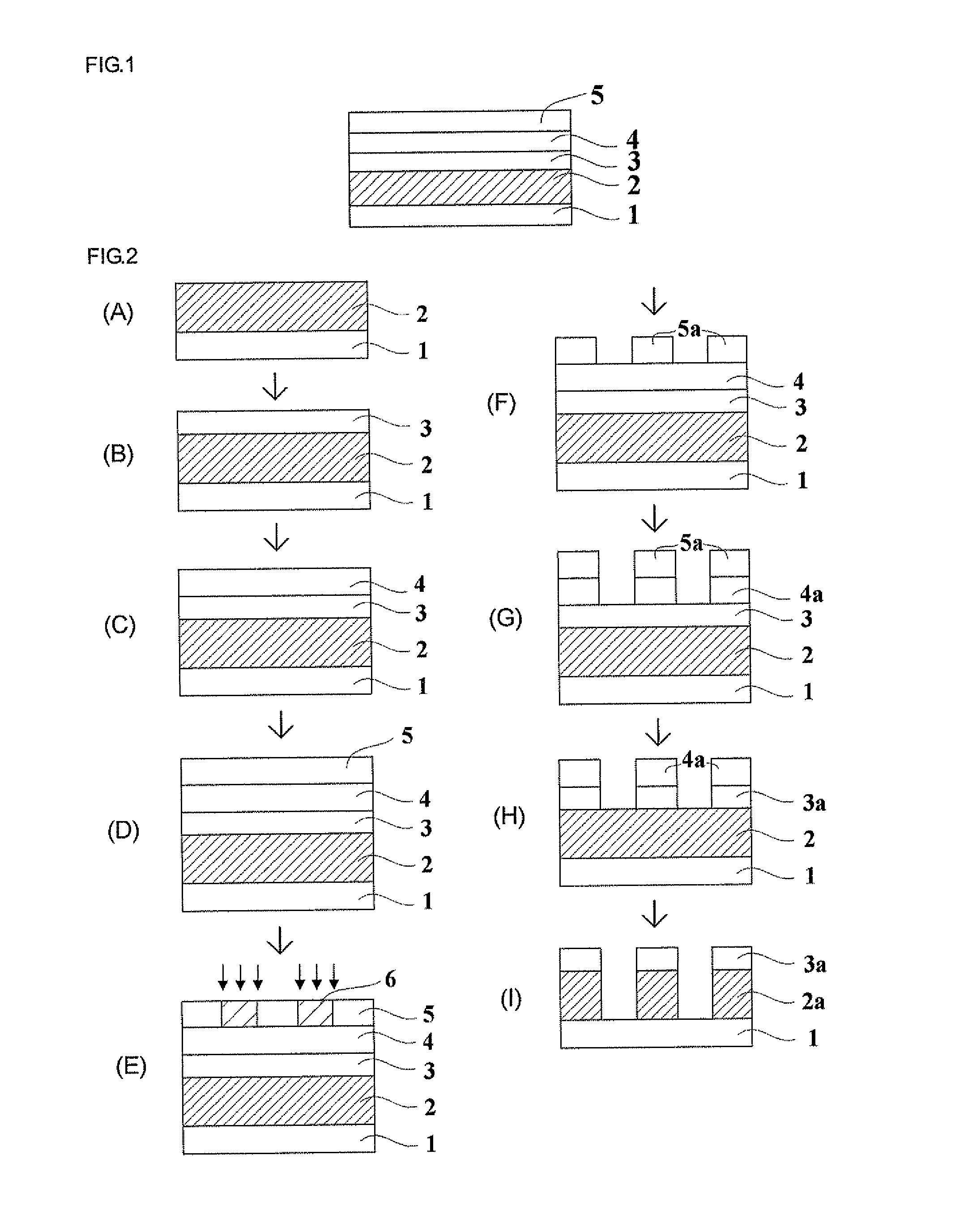Resist underlayer film composition and patterning process using the same
a technology of resisting underlayer film and composition, which is applied in the direction of decorative surface effects, electrical equipment, inorganic chemistry, etc., can solve the problems of copolymerization of acrylate ester, the surface roughness after etching is caused to worsen, and the resistance of substrate etching is substantially deteriorated, etc., to achieve high etching resistance, reduce reflectance, heat resistance
- Summary
- Abstract
- Description
- Claims
- Application Information
AI Technical Summary
Benefits of technology
Problems solved by technology
Method used
Image
Examples
synthesis example 1
Naphthol Truxene 1
[0139]In a 1-liter flask, 80 g of truxenone, 144 g of 2-naphthol, 4 g of β-mercaptopropionic acid, and 500 g of toluene were mixed; and then, 10 g of 98% sulfuric acid was added gradually into the mixture. The reaction was carried out with stirring the resulting mixture at 50° C. for 10 hours. The obtained reaction solution was added with 100 g of toluene and 30 g of water, and then with a 10% aqueous tetramethyl ammonium hydroxide solution till pH 7; and then water-washing and separation were repeated for 5 times. After removal of water, Naphthol Truxene 1 was obtained. The structure thereof was identified with the 1H-NMR analysis.
synthesis example 2
Naphthol Truxene 2
[0140]This was synthesized by reacting truxenone with 2-methoxynaphthalene followed by deprotection of the methyl group.
synthesis example 3
Naphthol Truxene 3
[0141]The hydroxyl group of the methoxy truxene, the intermediate of Naphthol Truxene 2, was reduced to a hydrogen atom; and then, this was reacted with naphthalene magnesium chloride, and then deprotection of the methoxy group was carried out to synthesize this compound.
PUM
| Property | Measurement | Unit |
|---|---|---|
| reflectance | aaaaa | aaaaa |
| thickness | aaaaa | aaaaa |
| thickness | aaaaa | aaaaa |
Abstract
Description
Claims
Application Information
 Login to View More
Login to View More - R&D
- Intellectual Property
- Life Sciences
- Materials
- Tech Scout
- Unparalleled Data Quality
- Higher Quality Content
- 60% Fewer Hallucinations
Browse by: Latest US Patents, China's latest patents, Technical Efficacy Thesaurus, Application Domain, Technology Topic, Popular Technical Reports.
© 2025 PatSnap. All rights reserved.Legal|Privacy policy|Modern Slavery Act Transparency Statement|Sitemap|About US| Contact US: help@patsnap.com



